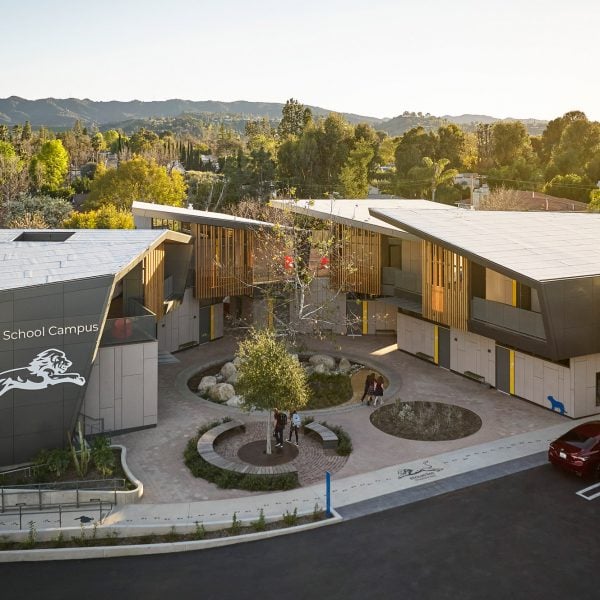Staggered volumes organised around a rounded courtyard form the net-zero Westmark Lower School, which was designed by architecture studio NBBJ to “reduce anxiety and stress” for students with learning differences.
Located in the southern California town of Encino, the facility is part of the larger Westmark School, which serves children with learning challenges such as dyslexia and dysgraphia.
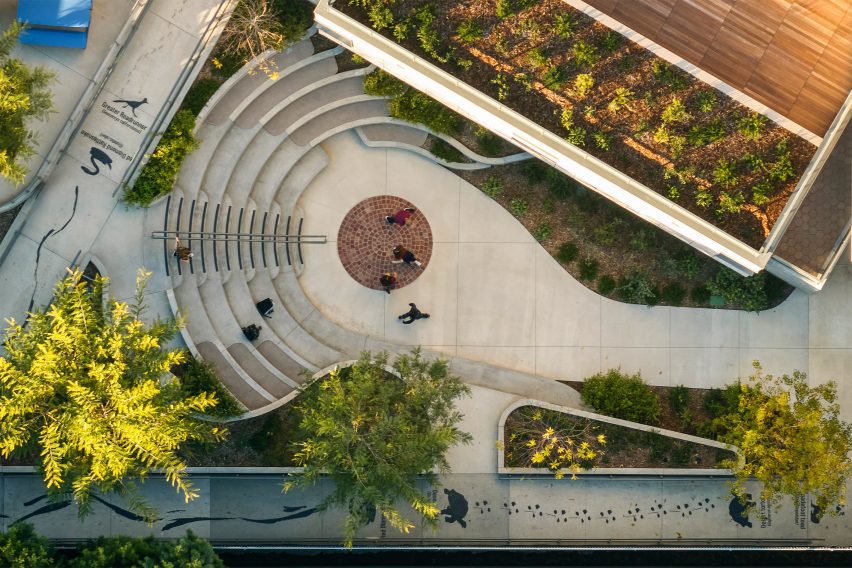
There is a significant need for educational facilities that accommodate neurodiverse students, said NBBJ, a design studio headquartered in Seattle.
“One in five children have learning differences, yet most schools are not designed with neurodiversity in mind,” said NBBJ.
Infused with inclusive and natural elements, the Westmark Lower School is meant to serve as “a prototype for how design can best support students with distinct learning styles”.
Encompassing 15,500 square feet (1,440 square metres), the building accommodates a total of 120 children in grades one through five.
U-shaped in plan, the facility – which has two levels and a basement – is organised around a courtyard with circular areas for gardens and seating.
A California sycamore tree lies at the heart of the courtyard.
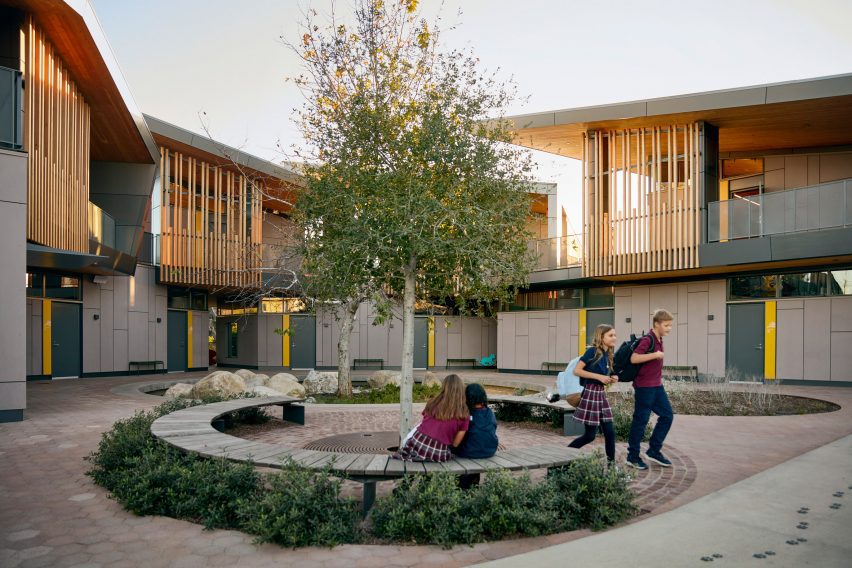
Staggered volumes help minimise sound transfer between classrooms, and deep roof overhangs provide shade while “creating a soft natural light that is comfortable for children with visual impairments”.
Exterior walls are wrapped in fibre-cement panels, aluminium-composite panels and wooden slats. The basement level has walls made of board-formed concrete.
Cross-laminated timber made of pine was used for soffits and ceilings, adding visual warmth to the facility.
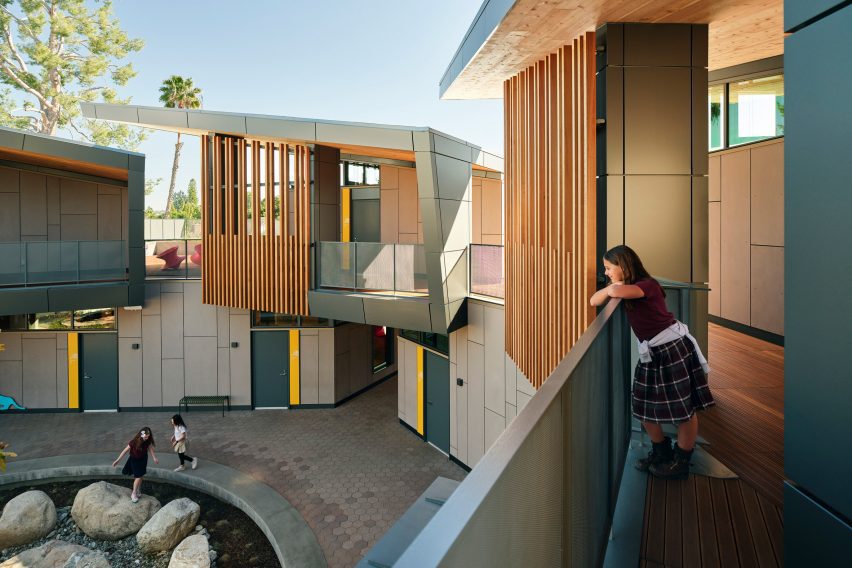
A series of terraces on the upper level serve as outdoor classrooms. Providing ample outdoor space was a top priority for the design team.
“The school is oriented around nature to reduce anxiety and stress, which may be enhanced in students with learning differences,” the team said.
“Every space is no more than 50 feet from the outdoors, so nature becomes a key part of a sensory learning experience, social exercise and creative play.”
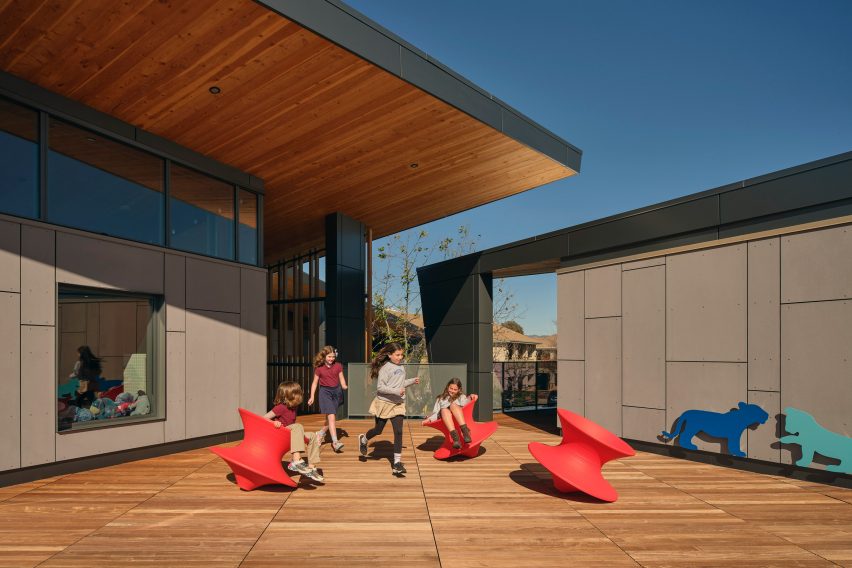
Within the building, one finds “right-sized classrooms” filled with natural light. There also is a black-box theatre and an occupational therapy space.
Throughout the school, the team sought to reduce unnecessary stimuli. Muted colours, dimmable lights and natural materials help encourage focused learning.
“The project applies the latest in neurodiversity insights to provide comfortable, choice-driven learning environments while increasing student well-being,” the team said.

The school has a number of sustainable features, including rooftop solar panels and water-efficient landscaping and plumbing fixtures.
An interactive display tracks the building’s energy and water savings and serves as an educational tool for kids.
The project incorporates zero-carbon measures advocated by the International Living Future Institute, and the project is on track to receive LEED Gold certification from the US Green Building Council.
Other educational projects in the US include a colour-filled school in Detroit by PLY+ and MPR Arquitectos that is meant to spark “experimentation and exploration” and a California boarding school with jagged rooflines that allude to the surrounding mountains.
The photography is by Ty Cole.
Project credits:
Architect: NBBJ
Contractor: Suffolk Construction
Civil engineer: KPFF
Structural engineer: Fast + Epp
MEP engineer: tk1sc
Landscape: SWA (Los Angeles studio)
Environmental graphics and lighting: NBBJ
Sustainability/energy analysis: Atelier Ten
Acoustics: Antonio Acoustics

